Sometimes you don’t know how deep the hole is until you try to fill it. In 2009, staring down what looked to anyone with a calculator like the biggest financial crisis since 1929, the federal government poured $830 billion into the economy—a spending stimulus bigger, by some measures, than the entire New Deal—and the country barely noticed. It registered the crisis, though. The generation that came of age in the Great Depression was indelibly shaped by that experience of deprivation, even though what followed was what Henry Luce famously called, in 1941, “the American Century.” He meant the 20th, and, to judge from our present politics, at least—“Make America Great Again” on one side of the aisle; on the other, the suspicion that the president is a political suicide bomber, destroying the pillars of government—he probably wouldn’t have made the same declaration about the 21st. A decade now after the beginning of what has come to be called the Great Recession, and almost as long since economic growth began to tick upward and unemployment downward, the cultural and psychological imprint left by the financial crisis looks as profound as the ones left by the calamity that struck our grandparents. All the more when you look beyond the narrow economic data: at a new radical politics on both left and right; at a strident, ideological pop culture obsessed with various apocalypses; at an internet powered by envy, strife, and endless entrepreneurial hustle; at opiates and suicides and low birthrates; and at the resentment, racial and gendered and otherwise, by those who felt especially left behind. Over the following pages, we cast a look back, and tried to take a seismic reading of the financial earthquake and its aftershocks, including those that still jolt us today.
AMERICA STOPPED BELIEVING IN THE AMERICAN DREAM
if you were standing in the smoldering ashes of 9/11 trying to peer into the future, you might have been overjoyed to discover this happy snapshot of 2018: There has been no subsequent major terrorist attack on America from Al Qaeda or its heirs. American troops are not committed en masse to any ground war. American workers are enjoying a blissful 4 percent unemployment rate. The investment class and humble 401(k) holders alike are beneficiaries of a rising GDP and booming stock market that, as measured by the Dow, is up some 250 percent since its September 10, 2001, close. The most admired person in America, according to Gallup, is the nation’s first African-American president, a man no one had heard of and a phenomenon no one could have imagined at the century’s dawn. Comedy, the one art whose currency is laughter, is the culture’s greatest growth industry. What’s not to like?
Plenty, as it turns out. The mood in America is arguably as dark as it has ever been in the modern era. The birthrate is at a record low, and the suicide rate is at a 30-year high; mass shootings and opioid overdoses are ubiquitous. In the aftermath of 9/11, the initial shock and horror soon gave way to a semblance of national unity in support of a president whose electoral legitimacy had been bitterly contested only a year earlier. Today’s America is instead marked by fear and despair more akin to what followed the crash of 1929, when unprecedented millions of Americans lost their jobs and homes after the implosion of businesses ranging in scale from big banks to family farms.
This story is from the August 6, 2018 edition of New York magazine.
Start your 7-day Magzter GOLD free trial to access thousands of curated premium stories, and 8,500+ magazines and newspapers.
Already a subscriber ? Sign In
This story is from the August 6, 2018 edition of New York magazine.
Start your 7-day Magzter GOLD free trial to access thousands of curated premium stories, and 8,500+ magazines and newspapers.
Already a subscriber? Sign In
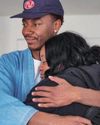
Indecent Exposure
Jerrod Carmichael's reality series attempts to excavate his deepest flaws.

Grave Mysteries
Josh O'Connor searches for the afterlife as a sad-eyed tomb raider.

Not Her First Rodeo
Beyoncé's country album is a history lesson, a rallying cry, and a missed opportunity.

How'd You Make That?
Three masterpieces, from glimmer through struggle to breakthrough.

In the Belly of the Barbz
Fear them. Cheer them. Nicki Minaj fans are sticking by their queen.
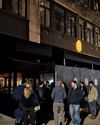
At the Altar of Korean Fried Chicken
Coqodaq's owner calls it a cathedral. It feels more like a club.
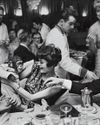
WHO ATE WHERE
119 YEARS of PUNK BREAKFASTS, UPTOWN LUNCHES, DRUNKEN DEALMAKING, and IMPOSSIBLE RESERVATIONS
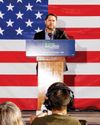
Arizona's Split Reality
Ground zero for the rigged-election conspiracy, the border state could decide both the fate of the Senate and the presidency.

98 MINUTES WITH...The Lavery Family
Beloved literary couple Daniel and Grace Lavery and their partner, Lily Woodruff, are all living and working full time in their Brooklyn apartment. Now, they have to find space for a baby.
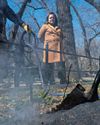
Neighborhood News: Patrolling With the Rat Czar
On a smokeout with Vermin Enemy No. 1.